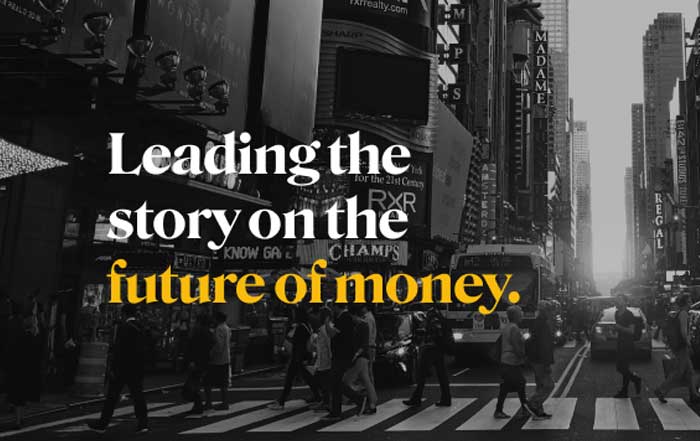Latin America stands at a critical juncture in its financial history. Long regarded as a region of high potential but equally high volatility, it is now increasingly defined by exchanges that are modernizing at speed, embracing financial technology, and courting global capital with greater confidence. The role of stock exchanges in this transformation cannot be overstated. They are the beating heart of capital formation, the testing ground for governance reforms, and the bridge connecting domestic savings to international flows. For readers of FinanceTechX, who operate at the nexus of fintech, global finance, and strategic business foresight, understanding Latin America’s stock exchanges is no longer optional — it is a necessity for navigating the shifting currents of global investment.
The past decade has seen repeated cycles of optimism and crisis in the region, shaped by commodity booms, political upheavals, and shifting macroeconomic conditions. Yet in 2025, a different picture is emerging. Reforms in transparency, corporate governance, and market integration are redefining the investor experience. Stock exchanges that were once insular are now opening doors to cross-border listings and digital assets, while domestic retail participation is broadening through mobile platforms and innovative fintech partnerships. The outcome is not only a more inclusive market but also one that is increasingly visible on the radar of institutional investors in New York, London, Frankfurt, Singapore, and Hong Kong.
The broader context is global rebalancing. As developed markets contend with slower growth, elevated interest rates, and political uncertainty, investors are seeking diversification into emerging regions with stronger demographic fundamentals and untapped growth potential. Latin America, with its youthful populations, resource wealth, and expanding middle classes, fits this profile. But unlike in earlier decades, investors today demand more than mere potential — they want exchanges that embody transparency, efficiency, and innovation. The exchanges that rise to this challenge will determine Latin America’s role in the future financial order.
Brazil: B3 as a Regional Powerhouse
Any examination of Latin America’s stock exchanges must begin with B3 – Brasil Bolsa Balcão, headquartered in São Paulo. It is not only the largest exchange in Latin America but also one of the ten most significant in the world by market capitalization. B3 is often described as the engine of the region’s financial system, and in 2025, its influence is greater than ever. Its dominance extends beyond equity trading into derivatives, fixed income, and commodities, making it a multi-asset platform that reflects both Brazil’s economic complexity and its ambition to shape regional financial flows.
Historical Evolution and Resilience
B3 was formed in 2017 through the merger of BM&FBOVESPA and CETIP, creating a consolidated powerhouse. This integration gave it a unique advantage: it became the central infrastructure for Brazil’s capital markets, overseeing equities, derivatives, and over-the-counter products. Over the past eight years, B3 has weathered turbulent times — from the political crises of the late 2010s to the global pandemic and subsequent inflationary shocks. Its ability to maintain operations and liquidity during these crises reinforced investor confidence and underscored its role as a stabilizing anchor in Latin America.
By 2025, B3’s resilience is evident in numbers. Daily trading volumes have risen steadily, surpassing pre-pandemic levels, while the number of retail investors has more than doubled in less than a decade. This is partly due to Brazil’s structural reforms in pensions, which encouraged citizens to seek higher returns in capital markets, and partly due to the democratization of access through digital platforms. Millions of Brazilians now trade via mobile apps integrated with B3, a phenomenon that has reshaped the investor profile from elite institutions to a broader base of retail participation.
Liquidity, IPOs, and Sectoral Growth
B3 has become the regional leader in hosting IPOs, with technology firms, fintech startups, and renewable energy companies increasingly choosing São Paulo as their listing venue. Between 2022 and 2025, there has been a notable surge in IPO activity, particularly from firms in the fintech, agri-tech, and clean energy sectors. This trend aligns with Brazil’s position as both an agricultural superpower and a leader in renewable energy, particularly biofuels and hydroelectric power. For investors, B3 offers a way to access not only traditional sectors like mining and finance but also the growth engines of the future.
Large corporations such as Petrobras and Vale continue to dominate market capitalization, but the story of B3’s dynamism is increasingly told through mid-cap and growth firms. For instance, Brazil’s booming e-commerce sector, led by companies like Mercado Livre (also listed on Nasdaq), highlights the potential for dual-listed firms to bridge Latin America and global capital markets. Similarly, renewable energy firms, benefiting from Brazil’s commitment to net-zero targets, are drawing ESG-conscious institutional investors.
ESG Leadership and Green Finance
B3 has distinguished itself as a pioneer in sustainable finance. It was one of the first exchanges in the region to join the United Nations Sustainable Stock Exchanges (SSE) Initiative and has actively promoted ESG reporting standards among listed companies. In 2025, Brazil leads Latin America in the issuance of green bonds and sustainability-linked debt instruments. The exchange has developed frameworks that align with international standards, providing investors with confidence that their ESG allocations meet rigorous criteria.
This ESG leadership is not merely symbolic. Global capital is increasingly flowing toward sustainability-linked instruments, and B3 has positioned itself as the go-to venue for such issuances in Latin America. For investors in Europe and North America, who face regulatory and reputational pressures to align portfolios with sustainable goals, Brazil offers a credible, scalable option. Learn more about the rise of sustainable finance at FinanceTechX green fintech.
Fintech Integration and Technological Transformation
Technology is reshaping B3 in profound ways. The exchange has invested heavily in upgrading its trading infrastructure, enhancing speed, security, and transparency. Blockchain pilots have been launched to improve post-trade settlement, and artificial intelligence is being deployed to monitor market anomalies in real-time. The exchange’s partnerships with fintech firms are particularly noteworthy, as they aim to expand participation among retail investors and small enterprises that historically lacked access to capital markets.
Brazil’s fintech sector, already one of the most vibrant in the world, plays a critical role in this transformation. Companies like Nubank, which went public in the United States but operates heavily in Brazil, are reshaping retail banking and investment behavior. Integration between digital banks and B3’s trading systems means that ordinary Brazilians can now invest seamlessly from mobile apps, creating a cultural shift in savings and investment. For deeper insights into fintech’s role in reshaping markets, see FinanceTechX fintech coverage.
Global Relevance and Cross-Border Ties
B3’s importance is amplified by Brazil’s position as the largest economy in Latin America and one of the top ten globally. International investors view B3 as a proxy for regional stability and as a gateway to South America’s broader opportunities. Moreover, B3 has actively pursued cross-border alliances, including partnerships with exchanges in China and Europe, aimed at facilitating dual listings and improving investor access. These initiatives underscore Brazil’s ambition to integrate into global capital flows more deeply.
Challenges and Risks
Yet, B3 is not without challenges. Currency volatility, driven by fluctuations in the Brazilian real, continues to create risks for foreign investors. Political uncertainty, while less acute than in the past, remains a factor that can unsettle markets. Additionally, Brazil’s reliance on commodities exposes its economy — and by extension B3 — to external shocks such as global demand fluctuations and climate-related disruptions. The exchange has sought to mitigate these risks by diversifying listings and strengthening its regulatory framework, but vigilance remains essential.
Mexico: The Dual Exchange System Driving Competition
Mexico is the second-largest economy in Latin America and a critical bridge between North America and South America. Its capital markets are central to this role, offering investors access not only to domestic firms but also to companies positioned within global supply chains. Uniquely, Mexico has two competing stock exchanges — the Bolsa Mexicana de Valores (BMV) and the Bolsa Institucional de Valores (BIVA) — a rare situation that has reshaped its capital markets since BIVA’s creation in 2018.
The Bolsa Mexicana de Valores (BMV): A Century of Dominance
The BMV is one of the oldest stock exchanges in the region, with more than a century of history. Traditionally, it has been the primary venue for Mexican companies to raise capital, hosting household names such as América Móvil, Grupo Bimbo, and Cemex. Over time, the BMV became synonymous with Mexico’s corporate elite, serving as the listing platform for the country’s largest conglomerates, banks, and multinationals.
In 2025, the BMV remains the dominant exchange by market capitalization, but it faces mounting pressure to evolve. Historically criticized for high listing costs and limited accessibility for smaller firms, the BMV has embarked on reforms aimed at simplifying processes and embracing technology. Trading volumes have been boosted through digital platforms, and the exchange has expanded its offerings in exchange-traded funds (ETFs), derivatives, and sustainable investment instruments. It also joined the United Nations Sustainable Stock Exchanges (SSE) Initiative, aligning itself with global ESG standards to attract institutional capital.
The Rise of BIVA: Competition Brings Innovation
The establishment of the Bolsa Institucional de Valores (BIVA) was a turning point. Designed to introduce competition and stimulate innovation, BIVA focused on attracting mid-cap and growth companies that found BMV’s listing requirements too costly or restrictive. In less than a decade, BIVA carved out a significant niche, particularly among companies in technology, renewable energy, and logistics — industries aligned with Mexico’s strategic position in supply chains reshaped by nearshoring trends.
BIVA also emphasized modern infrastructure, implementing advanced trading technologies and positioning itself as a more agile exchange. Its ability to provide competitive listing fees and digital onboarding processes has encouraged a steady pipeline of IPOs, particularly from startups and regional enterprises looking to scale.
By 2025, the rivalry between BMV and BIVA has transformed Mexico’s market into a more dynamic ecosystem. Companies benefit from greater choice, while investors gain access to a wider range of issuers. Learn more about capital market competition in FinanceTechX’s business coverage.
Mexico’s Strategic Global Position
Mexico’s exchanges are uniquely positioned due to the country’s integration with the United States through the United States–Mexico–Canada Agreement (USMCA). This trade framework not only underpins Mexico’s manufacturing and export economy but also enhances its attractiveness for international investors seeking exposure to supply chain resilience. As global companies reevaluate dependencies on Asia, Mexico is emerging as a nearshoring hub, and its stock exchanges provide direct access to companies benefiting from this trend.
Additionally, Mexico’s exchanges are key nodes for international investors entering Latin America. U.S. institutional investors, in particular, view Mexican equities as a relatively safer entry point compared to more volatile markets such as Argentina or Colombia. The exchanges’ regulatory frameworks, increasingly harmonized with global standards, reinforce this perception of stability.
ESG and Fintech Expansion
Both BMV and BIVA are advancing sustainability agendas. Mexico issued its first sovereign green bond in 2020, and by 2025, ESG-linked instruments are a growing share of listed securities. Mexican exchanges are also at the forefront of adopting fintech-driven solutions. Partnerships with digital banks and mobile trading apps are broadening access for retail investors, a demographic historically excluded from capital markets. This democratization mirrors trends in Brazil and reinforces the narrative of a region embracing technology to overcome legacy barriers.
- Largest exchange in Latin America by market cap
- Multi-asset platform covering equities, derivatives, commodities
- Strong IPO activity in fintech, agri-tech, clean energy
- Blockchain pilots for post-trade settlement
- Retail investor participation doubled in past decade
- UN Sustainable Stock Exchanges Initiative member
Chile: Santiago’s Leadership and Regional Integration
While Mexico and Brazil dominate headlines due to their size, Chile’s Santiago Stock Exchange (Bolsa de Santiago) commands respect for its stability, governance, and pioneering role in regional integration. Chile’s exchange may not match the size of B3 or BMV, but its influence extends across Latin America through initiatives such as the Mercado Integrado Latinoamericano (MILA).
The Santiago Stock Exchange: A Tradition of Stability
Founded in 1893, the Bolsa de Santiago has long been associated with transparency and reliability. Chile’s reputation as one of the most politically and economically stable countries in Latin America bolstered investor trust, particularly during times when neighboring markets experienced volatility. By 2025, Santiago continues to uphold these standards, ensuring it remains a favored destination for institutional investors who prioritize governance and predictability.
The exchange has a diverse portfolio of listings, covering sectors such as mining, utilities, retail, and financial services. Mining remains central, as Chile is the world’s leading copper producer — a commodity critical for renewable energy infrastructure and electric vehicles. International investors with a focus on ESG and climate transition strategies view Chilean copper companies as strategically important. This intersection of natural resources and sustainability strengthens the Santiago exchange’s global relevance.
MILA: The Mercado Integrado Latinoamericano
Perhaps Chile’s most significant contribution to regional capital markets is its leadership in creating MILA. Established in 2011, MILA sought to integrate the stock exchanges of Chile, Colombia, Peru, and later Mexico. The initiative aimed to provide investors with streamlined access to companies across member countries, increase liquidity, and strengthen Latin America’s competitiveness against larger global markets.
Progress has been gradual, hampered by regulatory differences and tax complexities, but by 2025, MILA has achieved greater traction. Cross-listings and harmonized disclosure standards have improved, and digital platforms have simplified cross-border transactions. Santiago remains the central hub for MILA operations, and Chile’s strong governance reputation lends credibility to the integration project.
For global investors, MILA represents the promise of a unified Latin American market, with greater scale and diversity. It offers exposure not only to Chilean mining but also to Colombian financial services, Peruvian commodities, and Mexican industrials. For strategic insights into global integration, see FinanceTechX world coverage.
ESG Leadership and Green Bonds
Chile is also a leader in sustainable finance. The government has issued multiple sovereign green bonds, and the exchange has encouraged corporate issuers to adopt sustainability-linked frameworks. These initiatives align with Chile’s broader national strategy to decarbonize and invest in renewable energy. By 2025, Chile is a hub for green finance in Latin America, complementing Brazil’s efforts and setting regional benchmarks.
The Santiago Stock Exchange has also established partnerships with international organizations to promote ESG disclosure and integrate global best practices. For ESG-conscious investors, Chile offers not just access to resources but also a governance framework that ensures accountability.
Fintech and Retail Participation
Like its regional peers, Santiago is embracing fintech. Mobile platforms and partnerships with local digital banks are expanding retail participation, especially among younger Chileans. The exchange has introduced educational initiatives to boost financial literacy, recognizing that long-term growth depends on cultivating a culture of domestic investment. The rise of retail investors has also diversified trading activity, reducing reliance on institutional flows.
Colombia: Building Investor Confidence Through Reform
The Bolsa de Valores de Colombia (BVC) represents both the challenges and opportunities of Latin America’s capital markets. For much of the last three decades, Colombia’s financial reputation was overshadowed by political instability, security concerns, and an overreliance on commodities. Yet since the 2010s, the BVC has worked steadily to modernize, building a more sophisticated exchange that increasingly reflects Colombia’s aspirations for global relevance.
Governance Reforms and Institutional Strengthening
The BVC has made governance reform a top priority. Regulatory upgrades by the Superintendencia Financiera de Colombia improved transparency, disclosure requirements, and corporate governance practices, all of which helped restore investor confidence. These reforms aligned the exchange with international standards, reducing the perception of Colombia as a high-risk frontier market and reclassifying it as a more investable emerging market.
By 2025, the BVC’s investor base has broadened. Pension funds and insurance companies, which manage significant domestic assets, are more active in equities, while foreign institutional investors are showing growing interest in sectors beyond oil and coal. Colombia’s financial services, infrastructure, and technology firms are increasingly prominent, offering diversification beyond commodities.
Integration with MILA
Colombia is a core member of MILA (Mercado Integrado Latinoamericano), and its participation has been vital in strengthening cross-border market depth. Through MILA, Colombian firms have gained visibility across Chile, Peru, and Mexico, attracting international investors who may otherwise have overlooked them. The BVC has promoted dual listings to expand liquidity and facilitate access to global capital.
The benefits of MILA are especially evident in Colombia’s banking sector, where financial institutions like Grupo Aval and Bancolombia have drawn regional investors. By aligning its practices with MILA partners, the BVC has positioned itself as a natural bridge for pan-regional capital flows.
Fintech and Digital Transformation
Colombia has a vibrant fintech ecosystem, particularly in digital payments and lending. Partnerships between fintech firms and the BVC have expanded retail participation, allowing younger investors to access trading platforms via mobile applications. Educational campaigns also aim to overcome cultural resistance to equity investing, which historically limited participation to a small elite.
Blockchain pilots for post-trade settlement are being tested, reflecting a regional trend toward leveraging distributed ledger technology to improve efficiency. With Bogotá emerging as a fintech hub, the integration between digital startups and the BVC is reshaping Colombia’s investment landscape. Learn more about fintech’s role in the region at FinanceTechX fintech insights.
Peru: Mining Strength and Niche Growth
Peru’s Bolsa de Valores de Lima (BVL) is smaller in scale compared to Brazil or Mexico, yet its significance lies in its specialization and integration within MILA. For global investors, Peru offers a unique gateway to commodities, particularly copper, which has become essential for renewable energy and electric vehicle supply chains.
Commodities and Mining Listings
Mining dominates the BVL. Companies like Southern Copper Corporation and other resource firms account for the bulk of its listings. In 2025, with global demand for copper at record levels, Peru’s exchange is receiving heightened attention from investors seeking to align portfolios with the green energy transition. The global shift toward electrification has transformed copper from a cyclical commodity to a strategic asset, and the BVL’s listings provide direct exposure to this dynamic.
Market Diversification and IPOs
Beyond mining, the BVL has made efforts to diversify. Consumer goods, financial services, and utilities have gained prominence, reflecting Peru’s broader economic growth. IPO activity, while modest compared to Brazil or Mexico, has been steady, supported by initiatives to attract small and mid-sized enterprises.
Peru has also advanced sustainable finance. The issuance of green and social bonds has expanded, aligning with Peru’s climate commitments. By encouraging ESG disclosure among listed companies, the BVL is building credibility with international institutional investors.
Participation in MILA and Retail Expansion
As a member of MILA, the BVL benefits from cross-listings and access to a wider pool of investors. This integration is especially valuable given Peru’s smaller domestic market, as it allows local firms to gain visibility across the region.
Domestically, the BVL is focusing on retail participation. Mobile trading platforms and partnerships with fintech firms have helped broaden access, particularly among younger generations. Educational initiatives are teaching citizens how equity markets can complement traditional savings vehicles. For broader perspectives on regional economies, explore FinanceTechX economy coverage.
Argentina: Reforms Amid Persistent Volatility
No discussion of Latin American stock exchanges would be complete without Argentina’s Bolsa y Mercados Argentinos (BYMA), headquartered in Buenos Aires. Argentina represents both the immense potential and enduring volatility that characterize the region. While Argentina has long been home to major agricultural and energy companies, persistent macroeconomic instability has limited the development of its capital markets.
Historical Volatility and Investor Skepticism
Argentina’s financial history has been marked by recurring cycles of debt crises, hyperinflation, and policy reversals. These conditions have eroded investor trust and limited long-term capital inflows. By 2025, despite repeated reforms, Argentina continues to struggle with high inflation, currency instability, and fragile fiscal balances.
Yet, paradoxically, these very challenges make Argentina a magnet for contrarian investors. Those willing to accept higher risk are often rewarded with outsized returns when reforms gain traction. The BYMA, therefore, remains a market where risk appetite and timing are critical.
Reform Efforts and Modernization
In recent years, Argentina has introduced reforms to stabilize markets and modernize the BYMA. Technology upgrades have improved trading efficiency, while partnerships with fintech firms have aimed to broaden access. The government has also promoted initiatives to attract listings, though political and regulatory uncertainty continues to discourage many firms from going public.
Nevertheless, sectors such as agriculture, energy, and technology remain promising. Argentina’s vast agricultural base — particularly soybeans and wheat — positions it as a key global supplier, while its potential in renewable energy and lithium mining offers long-term opportunities. Companies linked to these sectors attract significant interest, particularly as the global economy transitions to cleaner energy sources.
Investor Outlook in 2025
For investors, BYMA represents both risk and potential. The market’s volatility demands caution, but those with long-term vision recognize opportunities in Argentina’s abundant natural resources and entrepreneurial talent. International investors typically adopt a selective approach, focusing on sectors where Argentina holds global competitive advantages.
Still, Argentina’s exchange must address lingering issues of credibility. Consistency in policy, stability in currency management, and investor protection remain prerequisites for attracting broader participation. Until these challenges are resolved, BYMA will continue to be seen as a high-risk, high-reward market. For insights into risk navigation, see FinanceTechX business section.
Smaller Markets: Central America and the Caribbean
While Brazil, Mexico, Chile, Colombia, Peru, and Argentina dominate the conversation about Latin American stock exchanges, the story would be incomplete without acknowledging the growing role of smaller exchanges across Central America and the Caribbean. These markets may not yet command the scale or liquidity of their larger counterparts, but in 2025, they are carving out niche positions that are relevant to regional investors and international institutions focused on diversification.
Panama: Regional Hub Potential
The Panama Stock Exchange (Bolsa de Valores de Panamá) is one of the more prominent smaller exchanges, benefiting from Panama’s role as a logistics and financial hub. The country’s strategic position at the Panama Canal ensures relevance in global trade, and its exchange has steadily grown in importance, especially for bond listings. In fact, Panama’s capital markets are particularly known for their strong debt market, which attracts regional banks, insurers, and institutional investors.
The government and private sector have promoted efforts to expand listings in equities and sustainable finance. With Panama positioning itself as a logistics and green energy hub, the exchange is expected to grow in relevance, especially as global shipping adapts to climate and trade realignments.
Costa Rica and Green Finance Leadership
Costa Rica has cultivated an international reputation for sustainability, and this extends to its financial markets. The Costa Rican National Stock Exchange (Bolsa Nacional de Valores – BNV) is smaller in size but highly innovative in the green finance space. The BNV has pioneered the issuance of environmental bonds linked to conservation and renewable energy projects. This aligns with Costa Rica’s well-known commitment to carbon neutrality and environmental stewardship.
For global investors seeking ESG-aligned products, the BNV provides a specialized gateway. While liquidity is limited, the credibility of Costa Rica’s sustainability efforts makes its exchange a unique player in the region.
Jamaica: A Rising Caribbean Star
The Jamaica Stock Exchange (JSE) has become a standout among Caribbean exchanges. Recognized by international institutions for its performance and governance improvements, the JSE has delivered strong returns over the past decade, drawing attention from investors looking for frontier market exposure.
The JSE has invested in technology upgrades, expanded retail participation, and improved regulatory oversight. In 2025, it is increasingly positioning itself as a regional hub for the Caribbean, particularly in attracting cross-border listings and fostering fintech collaborations. Its relative dynamism compared to neighboring markets highlights the potential of smaller exchanges to punch above their weight.
Regional Relevance
These smaller exchanges may lack the scale of B3 or BMV, but they fulfill vital functions. They deepen financial inclusion, provide access to capital for small and mid-sized firms, and serve as laboratories for innovation in areas such as sustainability and fintech adoption. As regional integration efforts continue, they may also play larger roles in creating interconnected markets across Latin America.
Fintech: The Digital Transformation of Latin American Exchanges
One of the most transformative forces across all Latin American stock exchanges is the rise of financial technology. In 2025, fintech is no longer a separate industry operating at the margins of traditional finance. Instead, it is embedded within the very infrastructure of capital markets, reshaping how investors access exchanges, how transactions are settled, and how information is distributed.
Expanding Retail Participation
Historically, equity markets in Latin America were dominated by large institutions, with limited retail investor involvement. High costs, lack of financial literacy, and cultural barriers kept participation low. Fintech has changed this dynamic. Mobile trading platforms, digital banks, and robo-advisory services have democratized access to capital markets, allowing millions of new retail investors to participate.
In Brazil, integration between B3 and digital banks like Nubank has transformed the retail investing landscape. In Mexico, fintech partnerships with both BMV and BIVA are expanding participation among younger demographics. In Chile, Colombia, and Peru, fintech startups are developing low-cost apps that give retail investors exposure not just to domestic equities but also to cross-border opportunities through MILA.
Blockchain and Settlement Systems
Latin American exchanges are also experimenting with blockchain for post-trade settlement. Traditional settlement systems have been criticized for inefficiency and lack of transparency, particularly in smaller markets. By adopting blockchain, exchanges aim to reduce transaction times, cut costs, and minimize risks of fraud.
Brazil’s B3 has led the way with blockchain pilots for bond settlements, while Mexico and Colombia are testing distributed ledger solutions in collaboration with regional fintech startups. The use of tokenized securities is also expanding, with exchanges exploring how digital tokens can represent equity or debt instruments and provide liquidity to traditionally illiquid markets.
AI and Predictive Analytics
Artificial intelligence is being used to enhance surveillance, risk management, and investor services. Exchanges in Brazil, Chile, and Mexico are deploying AI systems to monitor trading patterns in real time, detect anomalies, and prevent market manipulation. At the same time, AI-driven analytics tools are being made available to investors through fintech platforms, enabling smarter decision-making and personalized portfolio management.
Cross-Border Integration via Technology
Technology is also facilitating integration across borders. Platforms built on common standards allow investors to seamlessly trade across MILA member markets, while fintech firms provide multi-country investment services. This technological interoperability is critical for overcoming the regulatory fragmentation that has historically limited Latin America’s capital market scale.
For more insights into how fintech is reshaping global and regional markets, explore FinanceTechX fintech coverage.
ESG and Green Finance Momentum
Perhaps the most significant structural shift across Latin American exchanges in recent years has been the rise of ESG investing and green finance. Global investors are increasingly directing capital toward assets that align with sustainability goals, and Latin American exchanges are responding with enthusiasm.
Sovereign and Corporate Green Bonds
Countries like Chile, Mexico, and Brazil have issued sovereign green bonds, attracting billions in international capital. Corporate issuers have followed suit, launching sustainability-linked bonds tied to decarbonization, social impact, and governance targets. Exchanges have adapted by creating listing segments dedicated to ESG instruments, ensuring visibility for investors seeking impact-aligned products.
By 2025, Latin America is a recognized player in the global green bond market. Brazil’s B3 and Chile’s Bolsa de Santiago are particularly advanced, but smaller markets like Costa Rica and Panama are also carving out leadership roles in sustainability-linked instruments.
ESG Disclosure Standards
Exchanges across the region are implementing stricter disclosure standards for listed companies. These initiatives align with global frameworks such as the Task Force on Climate-related Financial Disclosures (TCFD) and the International Sustainability Standards Board (ISSB) guidelines. Companies that fail to comply risk losing access to investor capital, incentivizing better governance practices.
Attracting Global ESG Capital
Institutional investors in Europe, North America, and Asia are increasingly under pressure to align portfolios with ESG mandates. Latin America’s exchanges, by expanding ESG product offerings and ensuring credibility, are attracting significant flows from these investors. For example, pension funds in Scandinavia and asset managers in Canada have increased allocations to Latin American green bonds, drawn by both financial returns and impact alignment.
ESG as a Differentiator
For exchanges competing to attract listings and investors, ESG has become a differentiator. Brazil’s emphasis on green finance, Chile’s pioneering role in sovereign green bonds, and Costa Rica’s environmental bond innovation highlight how sustainability is being leveraged as a competitive advantage. In a region often associated with volatility, the credibility of ESG initiatives provides reassurance to global investors.
To dive deeper into sustainability trends, visit FinanceTechX environment coverage.
Risks and Challenges Ahead
While Latin American stock exchanges in 2025 demonstrate resilience and innovation, they continue to face a complex set of risks that investors and regulators must carefully navigate. These challenges are not uniform across the region; each market presents unique vulnerabilities. However, certain systemic issues stand out as recurring obstacles to deeper integration and sustainable growth.
Political Instability
Political volatility remains one of the greatest risks for Latin American markets. Even in countries where reforms have advanced, sudden shifts in policy can disrupt investor confidence. Brazil, for example, has weathered transitions between administrations that vary widely in fiscal and monetary policy. Argentina remains the starkest example of how political mismanagement can erode market credibility, as investors must continually assess whether reforms will endure or collapse under populist pressures.
In Colombia, ongoing debates about taxation and energy policy highlight the fragility of reforms, while in Peru, periodic episodes of social unrest linked to resource disputes threaten stability. Political risk premiums are therefore priced into the region’s exchanges, limiting valuations compared to developed markets.
Currency Volatility and Inflation
Currency instability is another significant risk. Investors entering Latin American equities are often as concerned about currency depreciation as they are about company fundamentals. Argentina’s peso remains highly volatile, while Brazil’s real and Colombia’s peso are sensitive to external shocks such as changes in U.S. Federal Reserve policy or commodity price fluctuations.
Inflation, though moderating in some markets, continues to pose structural risks. Argentina and Venezuela provide extreme examples, but even in relatively stable economies like Mexico and Chile, inflationary pressures complicate monetary policy and investor decision-making. These dynamics affect capital flows, as international investors must weigh potential currency losses against equity gains.
Global Macroeconomic Shocks
Latin America’s markets are highly exposed to global macroeconomic shifts. Rising interest rates in the United States tighten financial conditions, reducing capital flows to emerging markets. Similarly, demand fluctuations in China — Latin America’s largest trading partner for commodities — directly affect Brazil’s agricultural exports, Chile’s copper sales, and Peru’s mining revenues.
These external dependencies create vulnerability to shocks outside the region’s control. While diversification efforts are underway, the reality is that global investors must always assess Latin America through the lens of international macroeconomic conditions.
Liquidity and Market Depth
Despite progress, Latin American stock exchanges still face liquidity challenges. Outside Brazil and Mexico, trading volumes are modest, making it difficult for institutional investors to enter and exit positions without significant price impact. Smaller exchanges in Peru, Colombia, and Central America lack the depth to attract large allocations from global funds. This constraint limits the ability of regional markets to scale up to the level of their Asian counterparts.
MILA was designed to address this issue by integrating liquidity, but harmonization across tax, currency, and regulation remains incomplete. Without deeper integration, the region risks fragmentation that prevents it from realizing its full potential.
Technology and Cybersecurity
While fintech integration and digital transformation are clear strengths, they also introduce new risks. Exchanges are increasingly dependent on advanced digital infrastructure, exposing them to potential cyberattacks. In 2024, several Latin American financial institutions experienced ransomware attacks, underscoring the vulnerability of critical financial infrastructure.
Exchanges such as B3 and Bolsa de Santiago are investing heavily in cybersecurity systems, but the pace of digital adoption raises questions about whether smaller markets can match the resilience of larger exchanges. For ongoing updates on global security issues, see FinanceTechX security coverage.
Outlook for 2025 and Beyond
Despite these challenges, the outlook for Latin American stock exchanges is increasingly positive. The reforms, technological advancements, and sustainability initiatives underway position the region as a dynamic frontier for global investors.
Brazil and Mexico as Pillars
Brazil’s B3 and Mexico’s dual exchanges will remain the dominant pillars of the region. B3 is likely to consolidate its role as a global hub for green finance and derivatives, while BMV and BIVA will continue to compete for IPOs and mid-cap listings. Together, they provide the scale and liquidity needed to attract institutional investors from the United States, Europe, and Asia.
Chile, Colombia, and Peru as Integrated Partners
The MILA framework will be critical for Chile, Colombia, and Peru. As integration deepens, these markets will collectively achieve a scale that makes them more attractive to international funds. Their focus on governance, sustainability, and regional harmonization gives them a distinct competitive edge.
Chile will remain a leader in green finance, Colombia will expand its fintech-driven investor base, and Peru will maintain global relevance through copper and other strategic commodities.
Argentina as a High-Risk Frontier
Argentina will continue to test investor patience. Its natural resource wealth and entrepreneurial talent ensure long-term potential, but persistent volatility will limit widespread institutional engagement. Selective, sector-based investments — particularly in agriculture, energy, and lithium mining — will remain the preferred strategy for those willing to accept risk.
Smaller Markets as Laboratories of Innovation
Smaller markets in Central America and the Caribbean will continue to innovate in niche areas, particularly sustainability-linked finance and fintech adoption. While they may not yet attract large institutional flows, their ability to pioneer creative solutions may influence larger exchanges over time.
ESG and Fintech as Long-Term Drivers
Two structural trends will shape the future of Latin American exchanges: ESG and fintech. ESG will increasingly drive listings, disclosures, and investment flows, embedding sustainability into the DNA of regional capital markets. Fintech will continue to democratize access, enhance efficiency, and enable cross-border integration, gradually reducing the fragmentation that has historically limited growth.
For deeper global perspectives, visit FinanceTechX AI coverage to explore how artificial intelligence is being leveraged in capital markets worldwide.
Conclusion
The story of Latin American stock exchanges in 2025 is one of transformation, resilience, and ambition. Brazil’s B3 anchors the region with scale and innovation, Mexico’s dual exchanges embody competition and modernization, Chile leads with stability and sustainability, Colombia demonstrates the power of reform, Peru leverages strategic commodities, and Argentina highlights the risks and rewards of volatility. Smaller markets across Central America and the Caribbean are also emerging as creative laboratories for fintech and green finance.
For global investors, these exchanges are no longer peripheral curiosities — they are strategic arenas that demand attention. As demographic growth, fintech adoption, and ESG integration reshape Latin America, its stock exchanges are increasingly vital to global financial flows. The opportunities are vast, but so are the risks. Navigating this landscape requires both expertise and adaptability.
At FinanceTechX, the commitment is to provide readers with authoritative, forward-looking analysis that empowers smarter decisions in this evolving environment. Whether exploring founders shaping fintech innovation, monitoring global economic shifts, or following developments in the crypto ecosystem, the goal remains clear: to deliver insights that balance experience, expertise, and trustworthiness.
Latin America’s stock exchanges are no longer markets to watch casually. They are markets to engage with strategically, as their integration into the global financial system accelerates. The next decade will determine whether they fulfill their potential as dynamic investment hubs or remain constrained by volatility. In 2025, the momentum is clearly on the side of progress.










